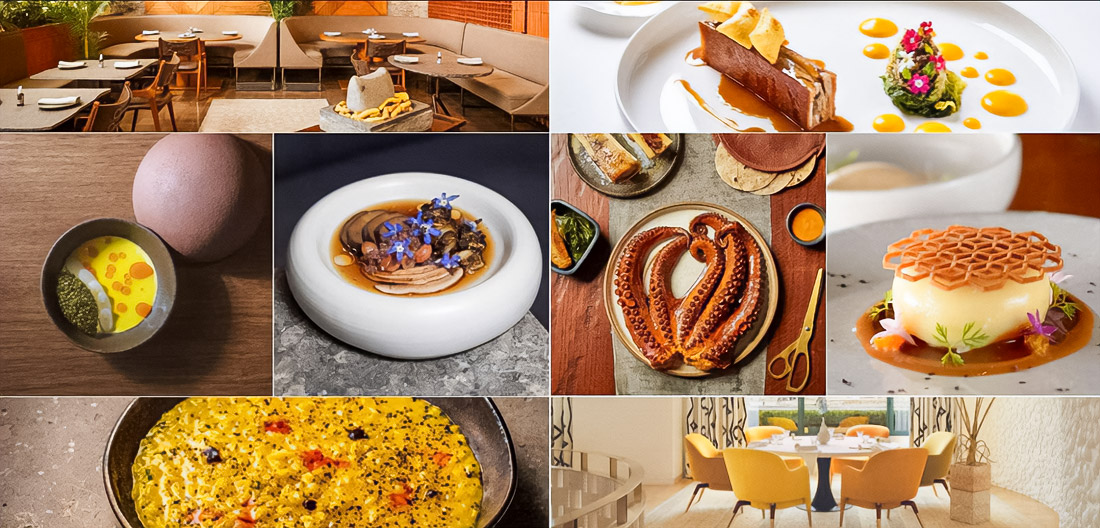In conditions of tough competition, the menu can become that means, which will highlight your establishment from the crowd, using text, visual elements, and stories to maximize the uniqueness of cuisine, atmosphere, and service. Learn more about restaurant with best view, which applies similar strategies. Research shows that a competently designed menu can increase sales by 15-20% since it influences the perception of the quality and cost of dishes.
Magic of restaurant menu: how details create impressions

Design menu — this is most important element of success in restaurant sphere, moreover not only external appearance and structure, but also idea and philosophy, laid in it, can radically change client experience. This is tool, which not just offers to clients dishes, but also reflects values and unique vision of establishment.
Influence of typography on the perception of quality of dishes
Typography — this is not just a choice of fonts; this is an important tool that can influence the feelings and expectations of clients. Typography can carry on itself certain cultural associations and evoke various emotions. More refined and rare fonts can form a feeling of premium and exclusivity. For example, elegant fonts with serifs, such as Garamond, are associated with tradition and reliability, and modern fonts without serifs, such as Futura, — with simplicity and style.
- Examples of successful restaurants show that the use of fonts can increase sales by 10-15%, creating pleasant visual impressions.
- The Optimal size of the font and its color help to accentuate attention on main dishes and positions, thus encouraging their choice.
Study layout of menu
Layout determines the perception of the menu and the effectiveness of influence on the choice of clients. A correctly planned layout can become a key factor in increasing the income of a restaurant. Research has shown that clients, first of all, pay attention to the upper and right parts of the menu — this is the “golden triangle,” where it is necessary to place the most unique and profitable dishes. It is also important to take into account the use of images and color accents for accentuation of attention.
- Example of successful case: A restaurant from London increased its sales by 25% thanks to rethinking the layout of its menu, strategically placing popular dishes in key zones.
- Most successful menus use about 3-5 colors to create visual variety without overloading the perception of clients.
Power of language and style of description of dishes
Language is no less important element of the menu, capable of not only informing but also stimulating appetite and imagination. Descriptions of dishes can significantly influence the decision of the client. The use of emotional language and narration about the dish can create more vivid and memorable impressions.
- Phrases type “homemade” or “with love cooked” increase the desire to try the dish, which influences the growth of sales by 8-12%.
- Mention about local or organic ingredients emphasizes quality and attention to details, helping to create a feeling of trust in the client.
Real examples of successful restaurants
Implemented examples from world practice show how a competently designed menu can increase the value of the brand. New York restaurant, after the introductory reform of the menu with a more refined design of fonts and emphasis on the uniqueness of dishes, increased its revenue by 30% and attracted new clients, oriented on the premium segment. In another example, a Parisian cafe, using minimalist design and accentuating attention on the origin of ingredients, strengthened its reputation among clients, valuing environmental friendliness and quality.
Useful tips for restaurateurs
Development of menu — this is both art and science. Here are key recommendations that can help in the creation of an attractive and effective menu reflecting the mission and values of the establishment:
- Understanding audience: Conduct research on the target group to determine their wishes and preferences, including possible cultural or national features.
- Use of typography: Fonts and their size should suit the concept of establishment and be visible and convenient for reading.
- Optimization of layout: Place key dishes in advantageous zones of the menu, using color and images to attract attention to key positions.
- Richness of language: Create descriptions that tell local or culinary stories of ingredients or their producers, building with client emotional connection.
- Regular testing and updating: Periodically conduct analysis of the effectiveness of the menu and make changes based on feedback from clients, market trends, and dynamics of sales.
Attractive and strategically developed menu is reflection of brand and philosophy of establishment. Using typography, layout and language wisely, you can create unique impressions for clients and significantly increase perceived value of your offer.

Biker, traveler, drummer, Bauhaus fan and RGD member. Performing at the fulcrum of beauty and mathematics to craft meaningful ideas that endure. Concept is the foundation of everything else.
